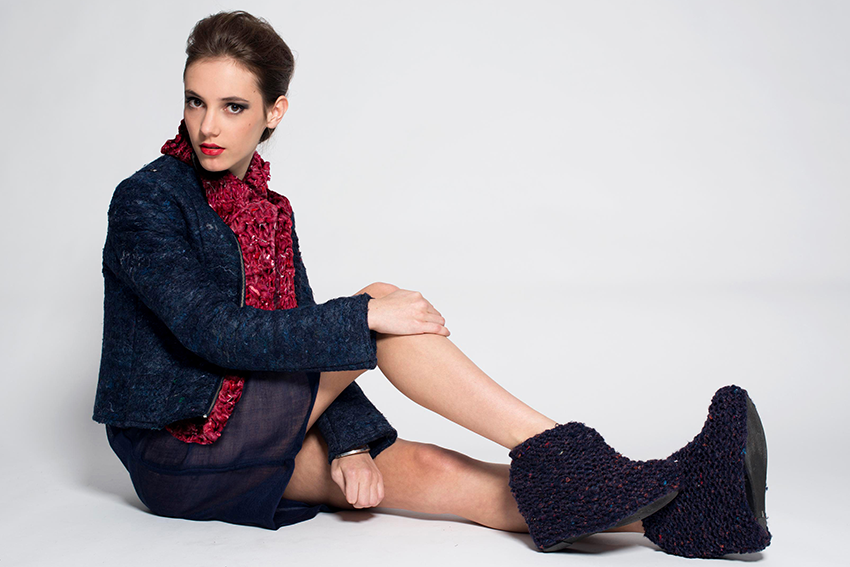Metamorphosis - from waste to fashion

Donna Cleveland reimagines fashion with a circular model, diverting textile waste from landfill and giving it new life in designer fashion.
Many people have a growing understanding of the waste generated by the fashion industry, said by some sources to the one of the most polluting industries, responsible for approximately 10% of global carbon emissions, more than pre-COVID-19 aviation and shipping combined.
For AUT Lecturer and Researcher in the School of Future Environments Donna Cleveland, the waste generated by the designer fashion industry is her creative life blood.
Dr Cleveland was selected as a finalist in the ‘We the Makers’ design competition enabling her work to be showcased at the National Wool Museum in Geelong, Australia.
Her entry, entitled ‘Making metamorphic materials’, was made from recycled designer textile waste destined for landfill. All the garments are designed with the intention of recycling them again in a circular process. “Developments and technological advancements in the methods of identifying and sorting fibres from textile waste will generate more opportunities for recycling as producers and consumers understand new value propositions other than just economic ones,” says Donna.
“I struggle balancing my fervent interest in fashion with my personal values of sustainability. The tussle between the need to use our resources better and the current practices of contemporary fashion design were the inspiration for my entry into We the Makers. My creative practice engages with issues of textile re-use, materiality and making, with a materials driven design process offering a true closed-loop circular system that is entirely regenerative.”
This innovative textile development has resulted in an unexpected aesthetic and draws no reference to its first life as rubbish. The development of a contemporary aesthetic emphasises the ability for sustainable practice to result in products which have a clear fashion context. Donna’s goal is to use this potential to solve the issue of textile waste in New Zealand by recycling both pre-consumer and post-consumer textile waste.
“I believe we have an opportunity to create something exciting for the future. We can change the way we think about fashion by reconnecting with the value of the fibres that make up our garments and move away from the throwaway culture. I’m passionate about the opportunities ahead of me in sustainable design education and the fusion of traditional applications with emerging technologies to redefine the future landscape of design.”